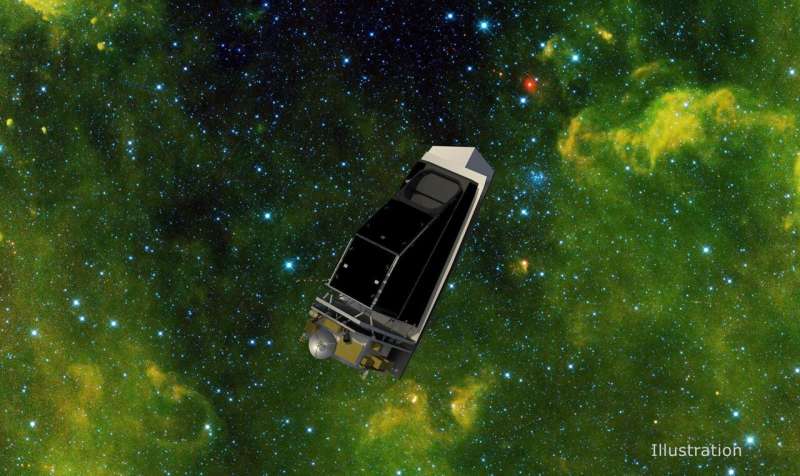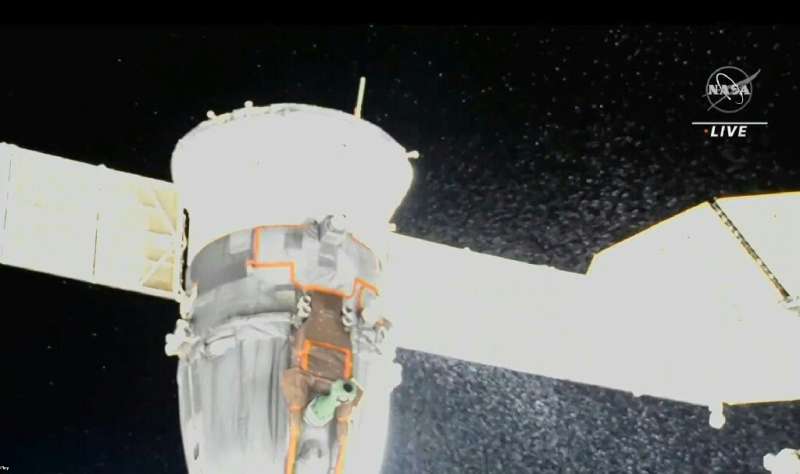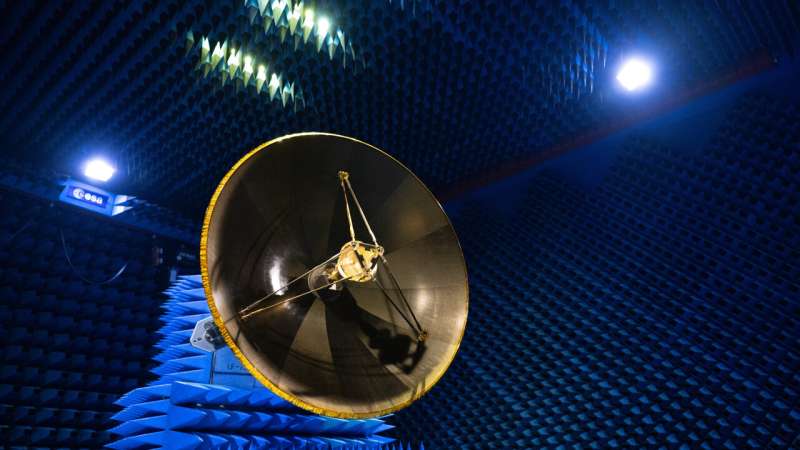
Copernical Team
Construction begins on NASA's next-generation asteroid hunter

Russia might send up rescue ship for ISS crew

Russia is examining the flight worthiness of a Soyuz crew capsule docked with the ISS that sprang a leak last week, and might need to send up a rescue vessel for stranded crew, officials said Thursday.
The vehicle, known as MS-22, began spraying its coolant into space on December 14, with dramatic NASA TV images showing white particles resembling snowflakes streaming out of the rear.
In a press briefing organized by the US space agency, Sergei Krikalev, who leads human spaceflight programs at Russia's Roscosmos, told reporters the damage was being assessed.
How the Hera asteroid mission will phone home

This is the antenna that will transmit back the first close-up images of the distant Dimorphos asteroid since its orbit was shifted by a collision with NASA's DART spacecraft.
The 1.13-m diameter High Gain Antenna of ESA's Hera mission went through a week-long test campaign at the Compact Antenna Test Range, part of the Agency's ESTEC technical center in the Netherlands.
The CATR's metal walls isolate external radio signals while its foam-spike-lined interior absorb radio signals to prevent reflections and reproduce the empty void of space. Each test session took more than 10 hours, with the antenna rotated a degree at a time to build up a 360 degree picture of the antenna's detailed signal shape.
"The High Gain Antenna is really a crucial part of our mission—it will be our sole means of receiving data and sending commands with the volume we need, with the Low Gain Antenna as backup for low data rate emergency communications," explains Hera antenna engineer Victoria Iza.
Hera system engineer Paolo Concari adds, "Coupled with an innovative deep-space transponder, this antenna will also perform science in its own right.
First sample depot on Mars
 Image:
First sample depot on Mars
Image:
First sample depot on Mars Flight control, space weather and debris: What an astronaut needs to know
 Video:
00:19:50
Video:
00:19:50
Recently, Andreas Mogensen, now getting ready for his ‘Huginn’ mission to the ISS in 2023, stopped by ESA’s ESOC mission control centre in Darmstadt, Germany, to meet with some of the experts who keep our satellites flying.
Andreas usually works at NASA's Johnson Space Center in Houston as an ISS ‘capcom’, and we don’t often see him in Europe. A few months back, while returning to Germany for some training at ESA’s Astronaut Centre in Cologne, we seized the opportunity to ask him if he’d like to stop over in Darmstadt for a look behind the
North Korea claims spy satellite progress, posts imagery of Seoul, Incheon
 North Korea claimed Monday to have taken satellite photos of the South Korean cities of Seoul and Incheon, as its state media boasted of success toward developing its first military spy satellite.
The state-run Korean Central News Agency (KCNA) reported an "important final-stage test" involving a mock satellite that it said was launched Sunday from the Sohae Satellite Launching Station in
North Korea claimed Monday to have taken satellite photos of the South Korean cities of Seoul and Incheon, as its state media boasted of success toward developing its first military spy satellite.
The state-run Korean Central News Agency (KCNA) reported an "important final-stage test" involving a mock satellite that it said was launched Sunday from the Sohae Satellite Launching Station in Chinese space-tracking ship sets sail for new missions
Underground Italian lab searches for signals of quantum gravity
 For decades physicists have been hunting for a quantum-gravity model that would unify quantum physics, the laws that govern the very small, and gravity. One major obstacle has been the difficulty in testing the predictions of candidate models experimentally. But some of the models predict an effect that can be probed in the lab: a very small violation of a fundamental quantum tenet called the Pa
For decades physicists have been hunting for a quantum-gravity model that would unify quantum physics, the laws that govern the very small, and gravity. One major obstacle has been the difficulty in testing the predictions of candidate models experimentally. But some of the models predict an effect that can be probed in the lab: a very small violation of a fundamental quantum tenet called the Pa Christmas craterscape

This beautifully crisp icy scene with a swirling ribbon of rusty red and white striped terrain connecting two large craters wraps up the year on Mars.
What it would take to discover life on Saturn's icy moon Enceladus
 The mystery of whether microbial alien life might inhabit Enceladus, one of Saturn's 83 moons, could be solved by an orbiting space probe, according to a new study led by University of Arizona researchers. In a paper published in The Planetary Science Journal, the researchers map out how a hypothetical space mission could provide definite answers.
When Enceladus was initially surveyed in 1
The mystery of whether microbial alien life might inhabit Enceladus, one of Saturn's 83 moons, could be solved by an orbiting space probe, according to a new study led by University of Arizona researchers. In a paper published in The Planetary Science Journal, the researchers map out how a hypothetical space mission could provide definite answers.
When Enceladus was initially surveyed in 1 
